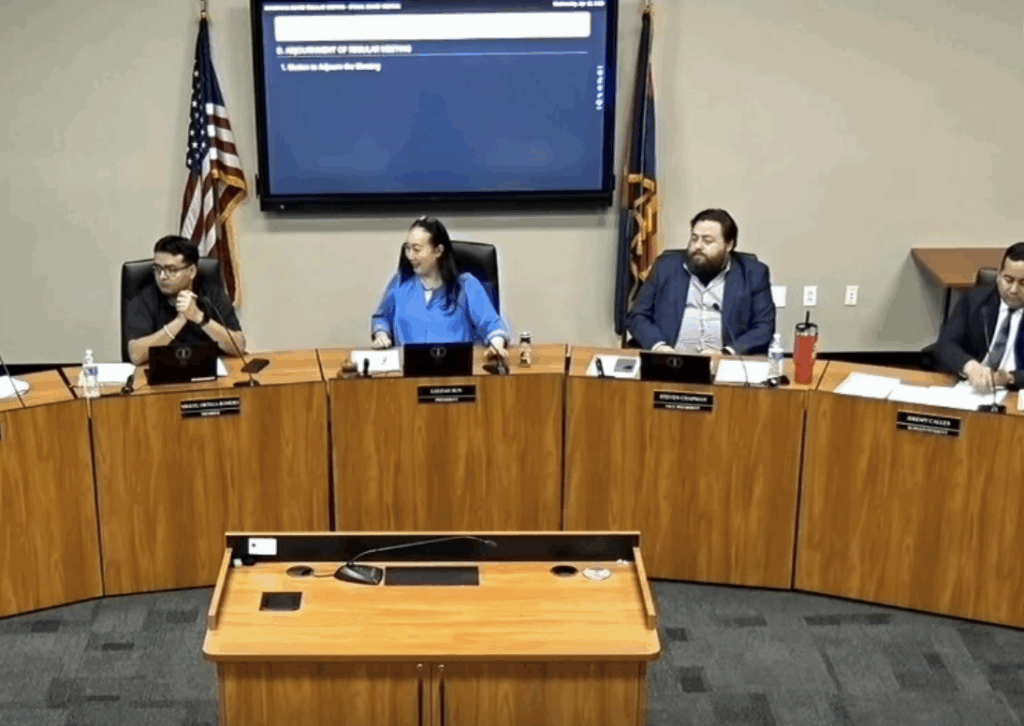
“Arizona Schools Required to Commit to New Guidelines on Race-Based, Diversity, Equity, and Inclusion Programs or Face Federal Funding Risks”
In recent months, Arizona’s educational landscape has been profoundly affected by sweeping changes to the way race-based, diversity, equity, and inclusion (DEI) programs are handled within schools. At the forefront of this shift is Arizona’s Superintendent of Public Instruction, Tom Horne, who has signed a new attestation that mandates Arizona schools to adopt a set of guidelines concerning DEI programs. This directive marks a significant departure from previous approaches that promoted diversity and inclusivity as key educational pillars.
In this article, we’ll explore the implications of this new development, the potential risks associated with not adhering to these guidelines, and the broader conversation surrounding DEI in education. As schools are required to sign and return these forms to remain eligible for federal funding, the future of Arizona’s public education system could be at a crossroads, depending on how educators and administrators respond.
The recent move by Superintendent Tom Horne to require schools to commit to specific guidelines is seen as a part of an ongoing effort to reshape how diversity and inclusion are managed in educational institutions across Arizona. Under the new guidelines, Arizona schools are explicitly prohibited from engaging in race-based programming or offering diversity, equity, and inclusion initiatives that focus on individual characteristics like race, ethnicity, gender, or sexual orientation.
In essence, the directive aims to create a uniform educational experience that does not prioritize or treat students differently based on race or identity. The attestation, which all Arizona schools must sign, serves as a public commitment to this new educational stance. Schools that refuse to comply could face significant consequences, with federal funding being put at risk if they fail to sign the attestation.
For many Arizona schools, particularly those with diverse student populations, the implications of this new directive are far-reaching. Diversity, equity, and inclusion programs have become a staple in many educational environments, aiming to provide equal opportunities and create an inclusive atmosphere for students of all backgrounds. DEI programs often include training for faculty and staff, student programs, initiatives to combat discrimination, and efforts to ensure that historically marginalized groups feel safe and supported.
Under the new mandate, such programs would be significantly reduced or even eliminated altogether. Schools are being asked to rethink their approach to issues like racial inequality, representation in the curriculum, and strategies for addressing biases in teaching and discipline. While some educators may welcome a more standardized approach, others fear that these changes will undermine efforts to address systemic issues that disproportionately affect certain student groups.
One of the most significant aspects of this new directive is the risk of losing federal funding if schools do not comply with the new guidelines. Federal funds are a critical source of support for schools, especially those that serve low-income students or those in rural areas. The fear of losing these vital resources has led to heightened anxiety among school administrators and educators across the state.
For many schools, the loss of federal funding would have a devastating effect. It could mean cuts to essential programs, loss of resources for underprivileged students, and even reductions in staff. The pressure to comply with Superintendent Horne’s directive could result in a forced compromise, where schools must choose between adhering to the new guidelines and maintaining access to crucial financial support.
The new guidelines have sparked a heated debate across Arizona and the broader nation about the role of race, diversity, and inclusion in education. Proponents of the changes argue that race-based programs and DEI initiatives have created divisions and promoted a narrative of victimhood rather than focusing on equality and individual merit. They argue that schools should prioritize educational content and not be distracted by issues related to identity politics.
Critics, on the other hand, contend that these programs are essential for creating a supportive and equitable environment for students from diverse backgrounds. They point to research that shows how students of color, LGBTQ+ students, and other marginalized groups often face unique challenges that must be addressed in order to ensure they have equal access to educational opportunities. For these critics, the new directive is seen as a step backward in the fight for civil rights and equal treatment in education.
The debate often boils down to two differing viewpoints: one that emphasizes the importance of colorblind policies and individual merit, and another that acknowledges the role of systemic inequality and the need for targeted support to level the playing field. Both sides argue that their approach is in the best interest of students, but the challenge lies in finding a balance that respects the needs of all learners.
Perhaps the most important question in all of this is: how will these new guidelines affect students in Arizona’s schools? The answer depends largely on the individual experiences and backgrounds of the students themselves. For students who belong to historically marginalized groups, the removal or reduction of DEI programs could leave them without the support systems that have helped them thrive in school.
Without DEI initiatives, students who face discrimination or bias in their daily lives may find themselves without the resources they need to cope with these challenges. Programs that promote cultural competency and awareness can help reduce incidents of racism, bullying, and exclusion. In the absence of these programs, students may feel less valued or supported, which can impact their academic performance and overall well-being.
On the other hand, students who have benefitted from DEI programs or workshops may feel that the shift away from these initiatives undermines their experiences. Students from diverse backgrounds may feel that their perspectives are being marginalized or dismissed by the educational system, which could contribute to a sense of alienation and disengagement from their studies.
As the new guidelines are implemented, educators and administrators will play a crucial role in navigating these changes. Teachers, in particular, may find themselves grappling with how to teach subjects like history, social studies, and literature in ways that do not address race or identity. Many educators already incorporate discussions of race, power, and privilege into their lessons to help students better understand the world around them.
For some teachers, this mandate will require significant changes to their lesson plans and teaching methods. For others, it may mean a return to a more traditional approach that focuses solely on academic content, without addressing the social issues that many feel are integral to a well-rounded education.
Administrators will also have to make difficult decisions about how to allocate resources. They may be forced to scale back or eliminate programs that provide mentorship, tutoring, or counseling to students from diverse or disadvantaged backgrounds. The challenge will be to find ways to continue supporting all students while complying with the new guidelines.
The new attestation signed by Superintendent Tom Horne is only the beginning of what is likely to be a contentious and evolving conversation about the role of diversity, equity, and inclusion in Arizona’s schools. As the policy is implemented, there will likely be legal challenges, protests, and ongoing debates over its merits and drawbacks.
Ultimately, the future of DEI programs in Arizona will depend on how the public responds to these changes, how school leaders navigate the complexities of federal funding requirements, and how students and educators advocate for their needs.
One thing is clear: the conversation about race, identity, and equality in education is far from over, and the policies that arise from this debate will shape the educational experience for Arizona’s students for years to come.
Superintendent Tom Horne’s new directive requiring Arizona schools to commit to guidelines that prohibit race-based programs and diversity, equity, and inclusion initiatives has sparked intense debate. While the policy aims to create a more standardized educational experience, the potential impact on students, educators, and school resources cannot be ignored. As schools navigate the complex decision of whether to comply with these new requirements, the broader conversation about how best to address issues of inequality and representation in education will continue to unfold.
In a state as diverse as Arizona, the question remains: can schools create an inclusive and supportive environment for all students without focusing on race and identity, or is this a misguided attempt to ignore the challenges faced by marginalized communities? Only time will tell.





